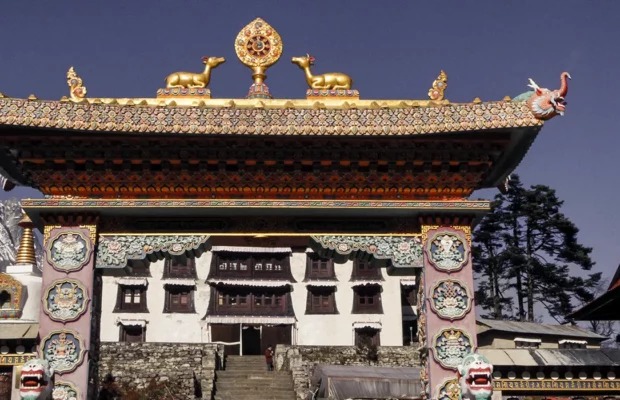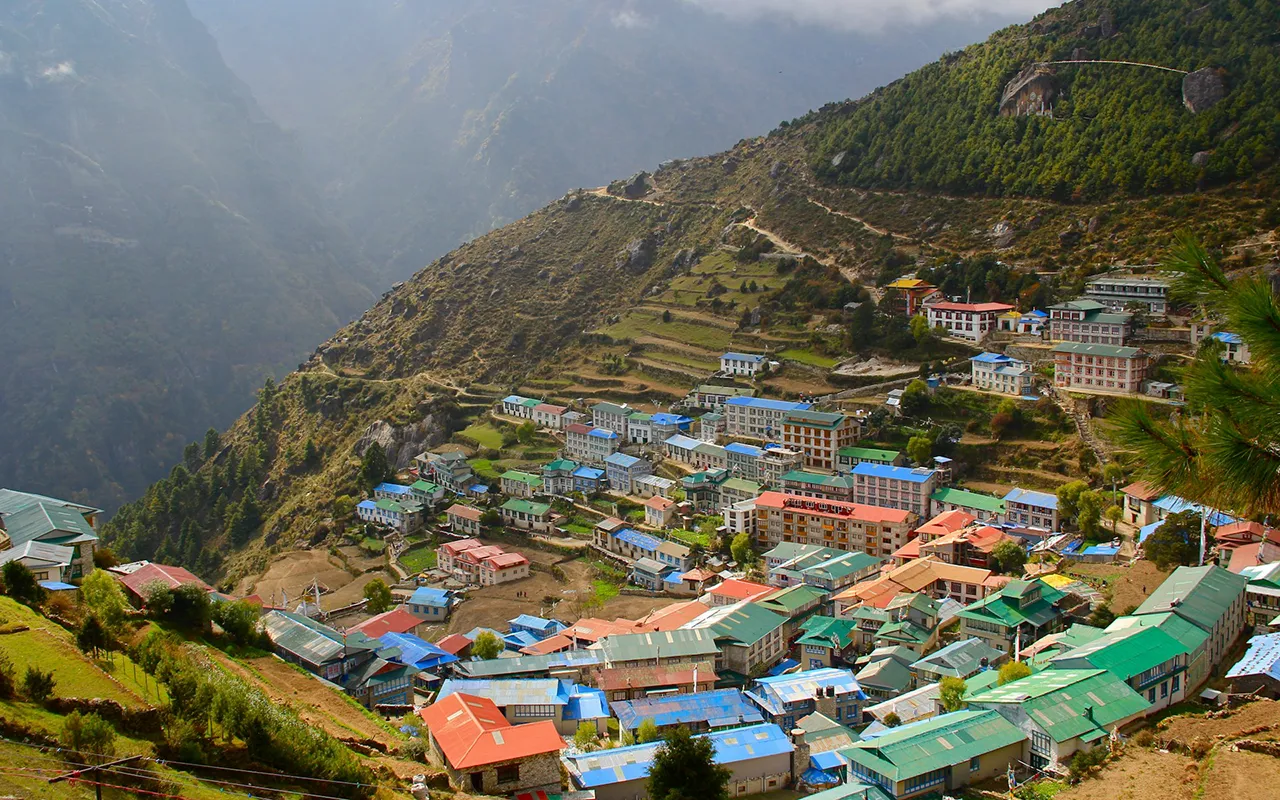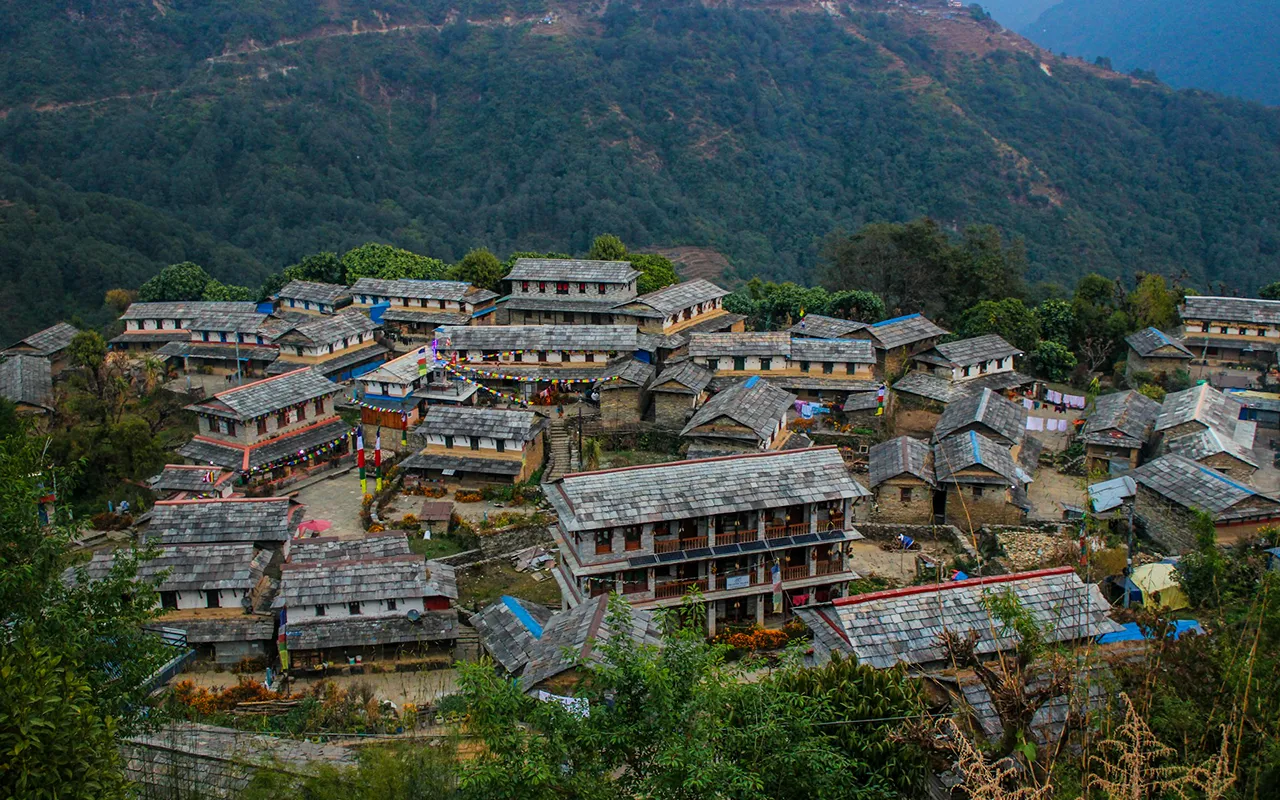Tengboche Monastery: A Peaceful Himalayan Sanctuary Above the Clouds
Introduction
Tengboche Monastery is a peaceful monastery located in the Khumbu region, Nepal, at 3,867 meters on the Everest Base Camp trail. Its exceptional site provides a spectacular panorama of the awesome giants of the Himalaya.
This monastery has very strong spiritual importance to both the Sherpa community and the trekkers. It is an energetic hub in the Buddhist religion and meditation, as well as the cultural conservation in the high-altitude Sherpa villages around it.
Tengboche is also an important cultural center beyond spirituality, which includes yearly festivals such as the Mani Rimdu that combine arts, dance, and ritual. It attracts pilgrims and other visitors to the world, which brings the communities together and creates a sense of respect for tradition.
The background of Tengboche features classic mountains like Mount Everest, Ama Dablam, and Lhotse. This deep relation between the monastery and the mountains adds to the spiritual atmosphere, evoking admiration and respect for the natural landscape in the Himalayas.
The History and Significance of Tengboche Monastery
Tengboche Monastery is established in 1916 by Lama Gulu aimed to be a ceremonial place of peace, only accessible after climbing to a high altitude in the Himalayas. His efforts helped the Tengboche Monastery emerge as the center of Buddhist faith in a remote region of Nepal, surrounded by the imposing Everest Mountains.
The monastery quickly evolved into the traditional center of Tibetan Buddhism in Khumbu, guiding spiritual practices and rituals to numerous Sherpa communities. It continues to be an important site of study, prayer, and local religious ceremonies.
In 1989, a devastating fire destroyed much of Tengboche, threatening its historical and spiritual legacy. However, the community and monks utilized their resources and the community spirit to restore the monastery, validating, once again, the importance of the monastery in the region’s ritual and religious life.
During the restoration, many of the sacred artifacts and scriptures were preserved or restored. As a result, the monastery demonstrated the continuity of many of the ancient traditions passed on to generations of practitioners and was able to reclaim its status as a living center of Himalayan Buddhist culture and heritage.
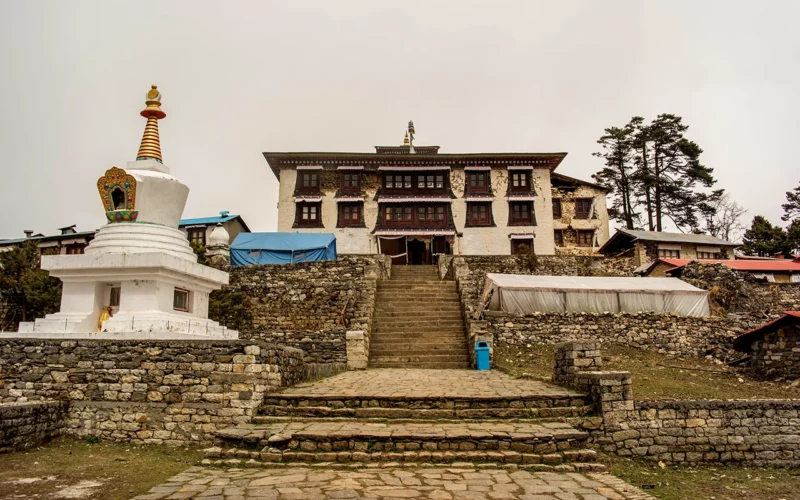
Spiritual Life at Tengboche
The daily rhythm of resident monks at Tengboche Monastery starts with prayers and chants. Through ritual, they call upon their gods for peace, protection, and blessings for the surrounding Khumbu villages and all visitors traveling through the area.
The monastery is also important for blessing trekkers and climbers before they set out to face the mighty challenge of Everest. These ceremonies have ritual meaning and provide adventure tourists with spirituality, courage, and safety for the arduous journeys in the Himalayas that lie ahead.
Tengboche also serves as a place of teachings, sharing Buddhist philosophy and practices. Monks provide guidance and wisdom to both local villagers and tourists interested in learning more. Mindfulness and compassion are cultivated within this remote mountain landscape during the experience of learning and this mission of cadres and monks.
The calm spiritual essence enveloping Tengboche attracts visitors worldwide. It engenders quiet to individual introspection, contemplation, and refreshment. The atmosphere, encouraged by a common belief in peace and the constant possibility of sacredness in the mountains, overcomes all cultural experiences.
Architectural Beauty and Location
The Tengboche Monastery presents the traditional Tibetan architecture, richly painted with various colors, carved with wood pieces, and a lot of prayer wheels. It has a huge courtyard, which is used as a place of worship during rituals and festivals, and has sweeping mountain views.
The site of the monastery offers a spectacular panoramic view of the Himalayas, such as Everest, Lhotse, Nuptse, Ama Dablam, and Thamserku. Such grandiose mountains serve as a spectacular setting that enhances the spiritual meaning and place of the monastery.
There are sacred statues of Buddha and valuable deities in the main hall, which symbolize wisdom, compassion, and protection. These sculptures are a symbol of the Buddhist beliefs, which are the subjects of prayer and meditation performed every day by the monks and visitors.
The design of this monastery represents the unity of man and nature. Its location, color, and sacred artwork also have profound spiritual connotations, allowing adherents to connect with the forces of the cosmos and make their stay in this serene Himalayan shrine richer.
The Mani Rimdu Festival
Mani Rimdu Festival is a colorful annual festival every year in the month of October or November at Tengboche Monastery. It is the end of the cycles of intensive meditation and spiritual practice of the monks in the region.
At the festival, monks do amazing mask dances, which are called Cham, and they represent protective gods and historical events. The rituals involve blessings and prayers that are directed to the peace, health, and prosperity of the Sherpa people and visiting parties.
It is also included in Mani Rimdu, where mass blessings are given to the community, and they are given the spiritual protection as well as healing. The chanting of religious texts by the monks is a good atmosphere that brings stronger faith and unity among all the people of this Holy Himalayan ceremony.
This festival is essential in terms of maintaining the cultural identity of Sherpas and Buddhism. It has transmitted old traditions and practices involving the younger generations in an active, dynamic spiritual culture that has strong roots in the Khumbu region.
Trekking to Tengboche Monastery
Hiking to Tengboche Monastery has a usual beginning as a point of Lukla and follows through the Sherpa villages of Phakding and Namche Bazaar to Tengboche, which is 3,867 meters. This path takes the picturesque valley of the Dudh Kosi River and provides the classic Himalayan scenery.
The trek is moderate in nature; thus, one would need a good level of fitness because of steep climbs, altitude, and unpredictable weather. The Trekkers need to adjust well, and in most cases, they have to spend an additional day in Namche Bazaar to acclimatize to the altitude safely.
The Sagarmatha National Park Entry Permit and Khumbu Pasang Lhamu Rural Municipality Permit are needed to allow one to hike in the Everest region. These are available at Kathmandu or at the entrance gate of the park in Monjo.
This is the best trek to take if a person is on the Everest Base Camp or Everest View Trek and wants to experience culture and enrich their spiritual lives. Tengboche Monastery offers a serene retreat with breathtaking mountain scenery and rich Sherpa culture.
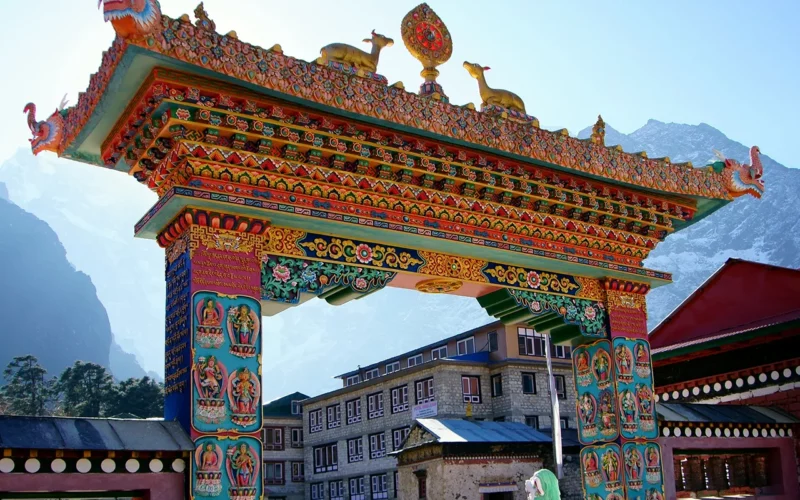
The Tranquillity and Experience
The morning chants of Tengboche Monastery are done before dawn, and the monks sit in the prayer hall and recite mantras and prayers. They sing with the help of horns and cymbals, and the echo fills the Himalayan valleys, producing an immense feeling of peace.
This serene setting is a drastic contrast to life in the city, and it is silent in the presence of massive mountains. The quiet environment of the monastery without noise and distractions enables the visitor and monks to internalize the aspects of stillness and calm that make them have a deep level of relaxation and mindfulness.
This peaceful environment makes one think about spirituality and makes the visitors relate to the teachings of Buddhism and the mountain nature. The natural beauty around Tengboche gives a sense of gratitude and introspection and welcomes a symbiotic relationship between inner harmony and the impressive Himalayan scenery.
Mindfulness, in this case, is not exclusive to the monks but also to trekkers who stop by the monastery. All these elements of ritual, sacred chants, and breathtaking sceneries make the experience a combination of transformation due to the spiritual grounding and connection to the vastness of nature.
Tips for Travelers
Spring (March to May) and autumn (September to November) are the best time to visit Tengboche Monastery because of the stable weather and the clear views of the mountains. The times also coincide with the important cultural events, such as the Mani Rimdu festival.
Visitors are required to wear modest attire without exposing the body and take off shoes before entering. Whether in the inner or outside, respectful behavior involves keeping silence, refraining from physical contact with monks, and clockwise circling of the monastery as a way of respecting traditions.
The accommodation around Tengboche is mostly tea houses and lodges that have simple facilities. These give the trekkers and visitors good places to rest and cultural trekking experience achieved by socializing with the local Sherpa hospitality and food.
Tengboche Monastery entry fees are around 300 NPR, and it depends on festivals, such as Mani Rimdu. Photography is not prohibited; however, visitors should seek permission to take pictures of monks or religious practices to remain respectful.
The best times to visit the monastery are during the daylight hours when one is likely to get the full benefit of the serene atmosphere and rituals of the monastery. It would be better to make reservations during festival seasons. Adhering to the local instructions is a guarantee of a fulfilling spiritual experience in this Himalayan shrine that will be respected.
Conclusion
Tengboche Monastery is a perfect combination of spirituality, culture, and Himalayan grandeur. It is the spirit of Tibetan Buddhism and Sherpa culture in the spectacular mountain view.
Its topography of being on the trekking route of Everest Base Camp makes it one of the most essential destinations the trekkers and climbers in need of relaxation and blessings. The history of Tengboche, the religious practices, and the amazing scenery establish an exclusive cultural and spiritual attraction.
Tengboche is a sanctuary that has to be visited by all tourists going to the Everest region. Its serene nature, yearly celebrations such as Mani Rimdu, and association with the magnificent Himalayas give one a reason to think, spiritually developed value this magnificent mountain world.




